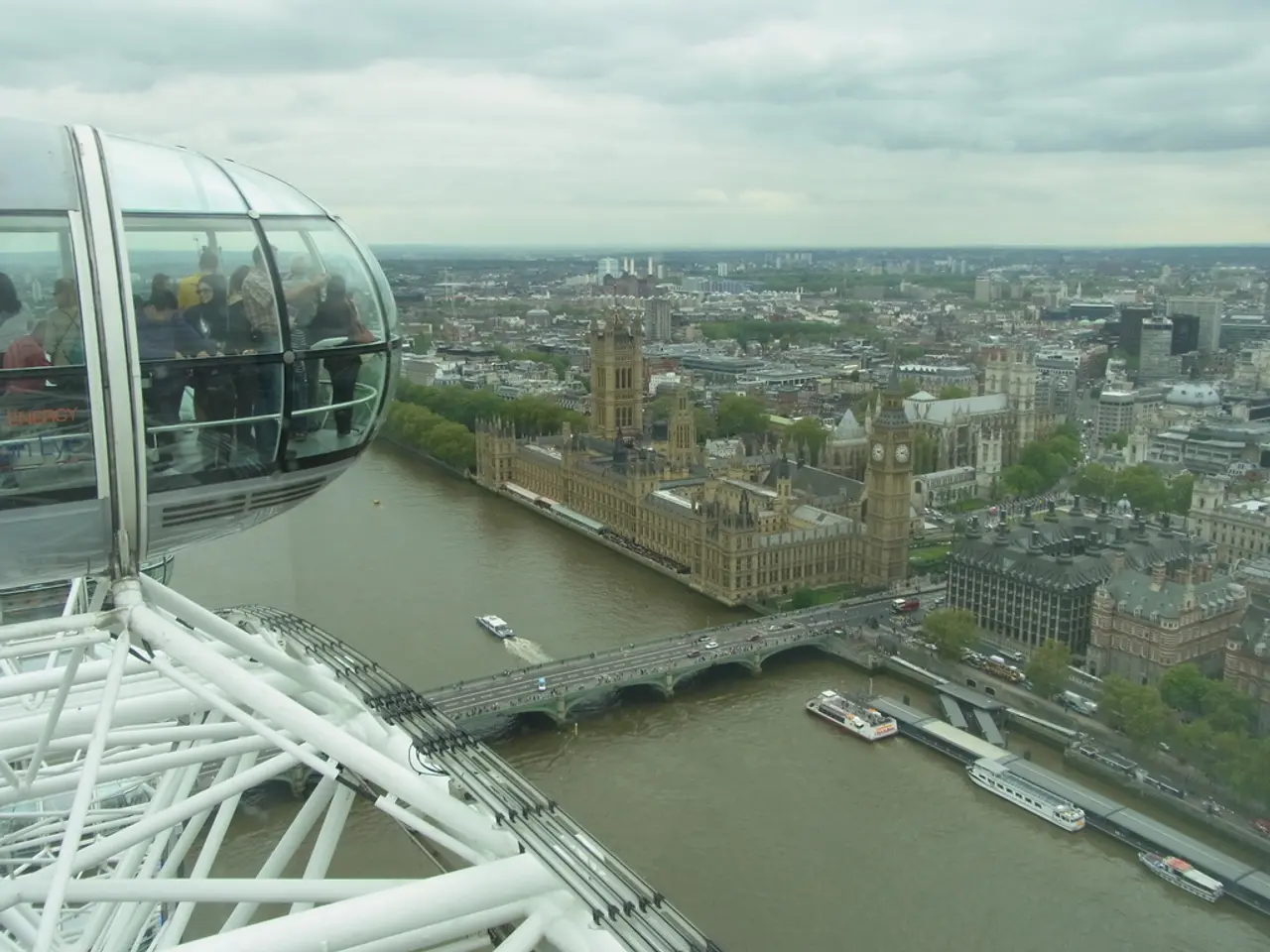Approximately half of London's rental properties remain out of reach for individuals with low income.
The private rented sector (PRS) in London has experienced a significant contraction from April 2021 to December 2023, according to recent analysis by Savills, commissioned by London Councils and Trust for London [1][2]. This contraction is primarily due to rising rents and a limited supply, making affordable private renting increasingly challenging.
High rent inflation has been a major factor, with rents in London rising by approximately 7.3% between June 2024 and June 2025, reaching averages above £2,200 per month [1]. This steep increase has priced many tenants out of the market, reducing the availability of properties in the PRS.
Furthermore, the continued growth in property prices and investment demand for housing as assets has resulted in a reduced stock of properties available for private rent [2][3]. Inflation in housing costs, such as utilities and energy, further adds to the affordability crisis [4].
Cllr Grace Williams, London Councils' Executive Member for Housing & Regeneration, has stated that this shrinking PRS is a significant challenge for Londoners and London boroughs [5]. She emphasised that the reduction in the number of PRS properties available to let puts those on a lower income at an increased risk of homelessness.
To address this issue, calls have been made for a combination of policy and market interventions. These include increasing the supply of genuinely affordable homes through new social and affordable housing developments, tightening regulations to protect renters and control rents, and financial support to landlords who offer longer-term and affordable leases [6].
Moreover, there are demands for government action to stabilise the rental market and cap excessive rent increases, alongside measures to encourage conversions of existing properties into affordable rental units [7]. Susie Dye, Trust for London's Grants Manager, has emphasised that it is challenging for renters on low incomes to find a home in London.
In response to these concerns, the government is working on the Renters' Rights Bill to protect renters, according to Susie Dye [8]. Additionally, ahead of the Autumn Budget, London Councils is calling on the government to make the increase in Local Housing Allowance rates a permanent fixture and to update them annually to help track market rents [9].
In conclusion, London's shrinking PRS since 2021 is a result of soaring rents and limited supply, exacerbated by overall housing and living cost inflation. To improve availability and affordability, it is crucial that policy and market interventions are implemented to increase the supply of affordable housing, protect renters, and stabilise the rental market.
References: 1. Savills Analysis 2. London Councils 3. Trust for London 4. London Councils - COVID-19 Impact 5. London Councils - Press Release 6. London Councils - Interventions Needed 7. Savills - Interventions to Address Homelessness 8. Renters' Rights Bill 9. London Councils - Autumn Budget Call
- The steep increase in London private rents and the limited supply have highlighted the need for policy interventions, such as increasing the supply of affordable housing, tightening regulations to protect renters and control rents, and financial support to landlords offering long-term and affordable leases.
- In light of the shrinking private rented sector in London, calls have been made for government action to stabilize the rental market, cap excessive rent increases, and encourage conversions of existing properties into affordable rental units, to aid those on low incomes finding a home in the city.






